Usually Wednesdays are for Rocket Roundup, and today is no different. While Americans were getting ready for — and then recovering from — Thanksgiving, the rest of the world was busy launching rockets. I also have updates on Starship Mark 1 and India’s Vikram lander. Let’s get to it, shall we?

- SpaceX expediting Mk3 construction in Texas, pausing Florida-based Starship builds (NASASpaceflight.com)
- SpaceX blows the top off first Starship rocket in pressure testing ‘to the max’ (CNBC)
Before we get to the stuff that launched, we can’t get away without at least touching on something that DIDN’T launch: the SpaceX Starship Mark 1 prototype. Way back on Wednesday, November 20th, the craft suffered a sudden and dramatic failure during testing of the ship’s cryogenic containment systems — that’s the tanks and lines intended to hold the liquid oxygen and methane which will someday power the Starships in flight.
SpaceX later reported that they’d decided beforehand to go ahead with pressurizing the system up to its maximum expected flight-level pressures, so the result “wasn’t entirely unexpected.” No one was hurt and no significant damage was done to the facilities due to safety protocols in place. According to the company’s statement, they had already decided that Mark 1 was to be used as a construction test bed only, despite earlier announcements to the contrary — including the very flashy Starship Mark 1 reveal by Elon Musk himself in October.
Take from that what you will. The Mark 1 and Mark 2 versions previously under construction have both proven not to be flight-worthy. Since the pressures involved in the Mark 1 test failure do represent part of the working flight regime of the spacecraft, SpaceX has some challenges to overcome going forward with the hopefully more robust Mark 3 version. Construction of that prototype continues at the same Texas location which was home to the Mark 1, while the Mark 4 will eventually be built at the Florida site that houses the Mark 2.
You can see why they had all personnel clear the area as a precautionary measure for the test: not only was there flying debris, but also the cold gas (likely nitrogen, but possibly oxygen, or else some of both gasses) quickly displaces the air around the site…. and despite the strong sunlight and wind it doesn’t dissipate for several minutes. Even if oxygen is part of the mix, at those temperatures you’re talking about freezing your lung tissue almost instantly.
And yes, the stainless steel used in its construction is the same steel being used for the Cyber Truck that Tesla recently unveiled. This is a seriously tough metal, but it’s not indestructible. There was a large amount of buckling caused by the rupture, especially around the top of the unit.
Rockets are hard.

- List of BeiDou satellites (Wikipedia)
Now, on to the launches: a China Long March 3B rocket launched the BeiDou-3 M21 & M22 (BD-3) mission on Saturday, November 23, 2019 at 12:55 AM (UTC).

- China launches two more Beidou navigation satellites (Spaceflight.Now)
- BeiDou-3 M21 & M22 (BD-3) (RocketLaunch.Live)
This will be the 50th and 51st BeiDou satellites in orbit. They are part of a constellation of global navigation satellites for China and surrounding areas.
BeiDou is the Chinese name for the Big Dipper, which can be used to find the surprisingly faint North Star (also known as Polaris). Historically, Polaris was a common reference point for navigation. So, if you’d like, think of the Big Dipper — BeiDou — showing you the way.

- ‘Adjust your location quickly’ — How China warns residents before rockets crash down from space (CNBC)
Soooo… China DOES warn people about these kinds of things… ummm….
According to a notice issued by Chinese authorities a few days prior to the launch, and obtained by CNBC, officials told those in the possible impact areas to
Turn off the gas; find a sturdy bunker to hide in; have a good pair of running shoes handy.
Check…?

Unfortunately, bits of the first stage crashed into an inhabited area. Again, evacuation orders were issued prior to launch with instructions, so people were out of harm’s way. Homes, however, aren’t quite as easy to move. At least one home was damaged. Reportedly, people are compensated for their losses by the government.
These pictures originally came from the Chinese microblogging site Weibo and were reposted by LaunchStuff on Twitter.

- Russia launches space surveillance satellite (Spaceflight.now)
- Unknown Payload (RocketLaunch.Live)
Next up: a Russian Military Soyuz-2 rocket launched a super-secret Unknown Payload on Monday, November 25, 2019 at 5:52 PM (UTC).
The exact purpose of the satellite is unclear, but the Russian Ministry of Defense stated that the satellite’s mission is to monitor other Russian satellites in space. There’s also an optical instrument that’s capable of taking images of Earth. That’s it. That’s literally all we know about this satellite.
Curiously, launch video was released. Because apparently, even if you’re launching a highly classified military-related space surveillance satellite, you’re still going to have launch video.
- Минобороны России (YouTube) via SpaceFlightNow.com

- Inmarsat-5 (GX-5) (Rocketlaunch.live)
- Ariane 1, 2, 3 (ESA)
- Ariane: EUROPEAN LAUNCH VEHICLES (Encyclopedia Britannica)
- KA VS KU BAND : WHICH IS THE BEST FOR SATELLITE BROADBAND? (aidforum.org)
A little more than 24 hours later, an Arianespace Ariane 5 rocket launched the Inmarsat-5 (GX-5) mission on Tuesday, November 26, 2019 at 9:23 PM (UTC).
Two payloads were onboard:
Tiba-1 — Built by “Talus Alenia Space” = Thales Alenia Space in partnership with Airbus Defense and Space, this 5,600 kg / 12,300 lb (2800 2L soda bottles) GEO-sat will provide communications exclusively for the Egyptian government. The satellite is reportedly a part of a large deal with France made back in 2016 for military hardware totalling over US$1 billion.
This is Egypt’s first dedicated satellite, which in itself is a bit of a milestone. But its construction is also an interesting story as the partners who built and tested the satellite are normally rivals in the spaceflight hardware industry. Airbus has itself said that Thales Alenia was the “lead partner” on the project, though Airbus provided both the satellite bus and the primary testing facilities. Thales Alenia provided the mission payload, which is expected to last about 15 years.
Inmarsat-GX5 — Built by Thales Alenia Space, this 4,000 kg / 8,800 lb commercial communications satellite is part of Inmarsat’s Global Xpress mobile broadband constellation. From GEO orbit, it will provide additional Ka-Band coverage to Europe and the Middle East, particularly for airline and maritime users, and even for the US military. For those wondering “Why Ka-Band?”: While Ka-band is much more sensitive to the effects of weather than Ku-band, it provides a great deal more bandwidth than Ku per transponder. This satellite will provide greater capacity than the previous four GX satellites combined.
In addition, the Ka-band is largely underutilized primarily because of the issues with European weather. Meanwhile the Ku spectrum is already highly saturated in the European market. Obviously this creates a trade-off: how can you use bandwidth that you can’t access? However, thanks to various other encoding and communications techniques often used in cellular service, mobile device applications of Ka signals aren’t impacted much by weather. This isn’t usually the case in dedicated satellite services. Additionally, customers travelling by air are generally well above the effects of weather and water vapor, so this is not a concern for them while in flight.
BONUS FACT: This launch comes almost 40 years after the very first launch by the company which would become known as Arianespace. An Ariane 1 was launched at 2:14 pm Korou time on the afternoon of Christmas Eve way back in 1979. It placed an 1,875 kg / 4070 lb (938 2L soda bottles) satellite payload simulator into nominal GTO, effectively ending what had been an American monopoly on commercial spaceflight to GEO.
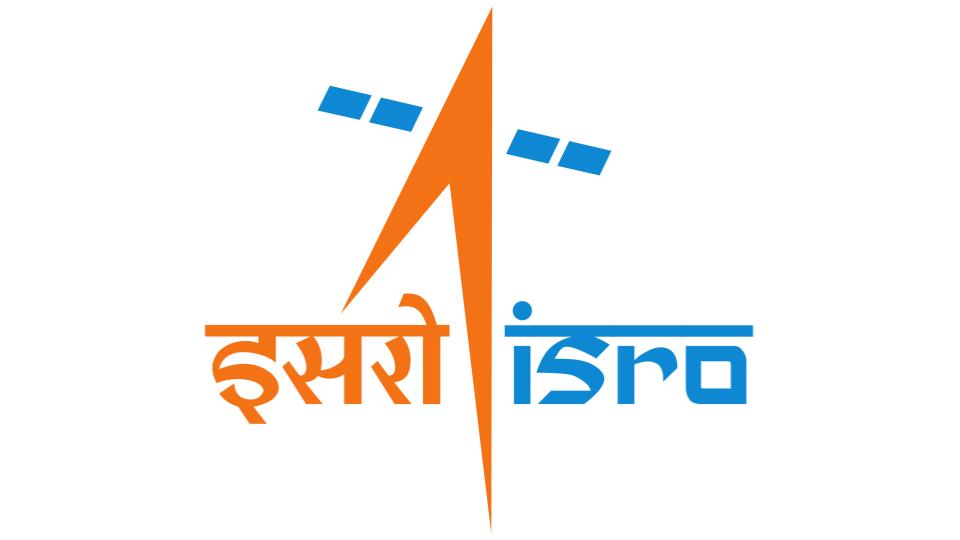
- Live coverage: PSLV launches with 14 satellites (Spaceflight.Now)
An ISRO PSLV rocket launched the Cartosat-3 mission on Wednesday, November 27, 2019 at 3:58 AM (UTC).
It was the 21st launch of the Polar Satellite Launch Vehicle in the XL configuration, which has 6 SRMs attached to the central 4-stage core. Four of these SRMs ignite at launch, while the remaining two ignite some 25 seconds into flight. The SRMs burn for about 70 seconds, then jettison in order of ignition, with the 1st stage cut-off and separation following mere seconds later.
You could think of it as India’s version of the Korolev Cross… plus 2… plus 1!

CREDIT: ISRO Official on YouTube (https://youtu.be/ytPpAl0NCHQ ); screen cap of launch video (43:10 mark)
- Cartosat-3 (Rocketlaunch.Live)
Three satellites were deployed into sun-synchronous orbits during this launch:
Cartosat 3 — By far India’s most advanced Earth-observing satellite, this is the first of the 3rd generation of Cartosats, and the ninth satellite in the constellation launched since 2005. The first Cartosat had in imaging resolution of around 2.5 m / 8.2 ft, but Cartosat 3 has literally ten times the resolution of that original payload (25 cm / 10 in.), and also features a much wider imaging track on the ground than previous versions.
Flock 4p (12x) — The dozen upgraded “SuperDove” nanosatellites satellites are built by Planet, a San Francisco-based company which sells 3 m / 10 ft resolution imagery of the Earth’s surface to customers as diverse as US farmers and government spy agencies.. These newest Doves join a fleet of about 120 other Dove sats, plus 15 larger satellites called SkySats, which offer higher resolution imaging. Planet reports all 12 are operating normally at this time.
Meshbed — Meshbed is a 3U CubeSat which was built by Analytical Space of Cambridge, Massachusetts for the purpose of testing an experimental phased array antenna developed by MITRE. MITRE, in turn, is a not-for-profit company that works with U.S. government research centers, and whose patented Frequency-scaled Ultra-wide Spectrum Element antenna could potentially provide faster turn-around for signals from space, with benefits to tactical reconnaissance & communications.
The US satellites were all booked on this launch through NewSpace India Ltd., the newly formed commercial arm of ISRO.
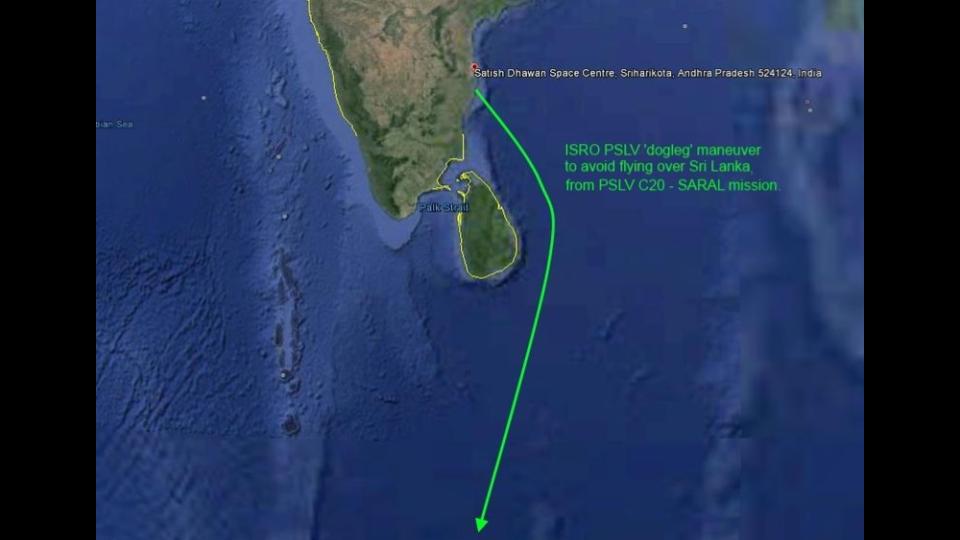
CREDIT: https://commons.m.wikimedia.org/wiki/File:ISRO_PSLV_dogleg_maneuver.jpg
The launch path took a bit of a roundabout way of getting to its sun-synchronous orbit. As a refresher, an SSO has a slightly retrograde path, meaning it heads back to the west, while most launches head off to the east to make use of the Earth’s rotation. In addition to the fact that a pure SSO trajectory from the Satish Dawan Space Center would parallel India’s own coast for a long stretch, things are made more difficult by the fact that relationships between Sri Lanka and India are often somewhat tense.
This being the case, extra effort is made by ISRO to avoid causing incidents in case something from one of their launches should happen to fall back to Earth….
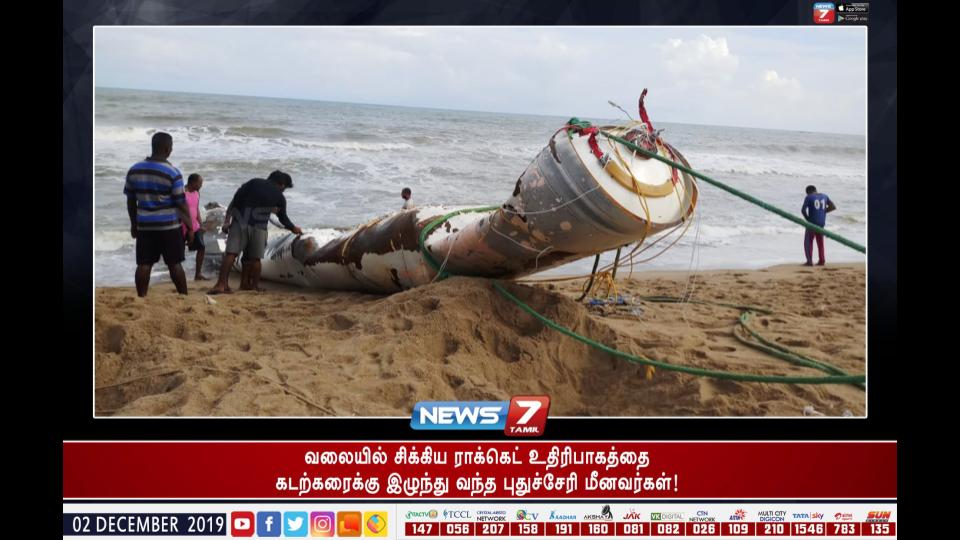
…which is what happened. Fishermen in Puducherry, Tamil Nadu, India literally dragged rocket parts to shore.
From News 7 Tamil: “Puducherry fishermen dragged rocket spare parts to shore”
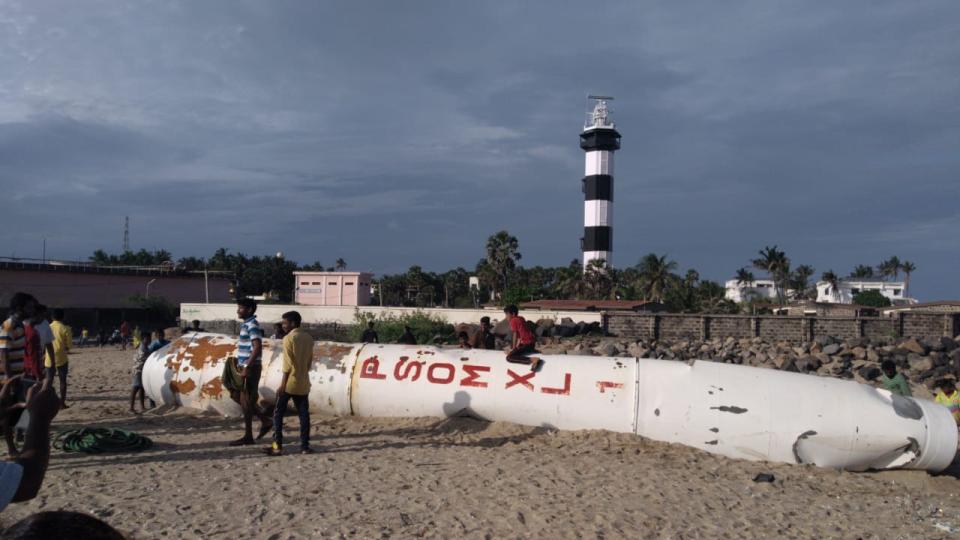
Madrassan Pinky from ABP News tweeted this picture, stating “A part of PSLV was found in the sea today in Pondicherry, which was dragged from sea to the shore by fishermen. More details awaited. Picture shows it is the PSOM-XL, which is an improved version of the solid propellant strap on the motor of PSLV rocket of @ISRO. PSOM-XL (length 13.5 m) has the capacity to carry 12.4 tonne of propellant.

- Gaofen-12 (RocketLaunch.Live)
A China Long March 4C rocket launched the Gaofen-12 mission on Wednesday, November 27, 2019 at 11:52 PM (UTC).

This mission’s patch features the Long March 4C shooting away from a mountainous terrarian. There’s 9 bright stars standing out amongst a starry sky. I HAVE NO IDEA WHAT THIS MEANS.
It’s NOT:
- Representing the number of Long March 4C launches (28)
- Representing the number of Gaofen satellites (16 total)
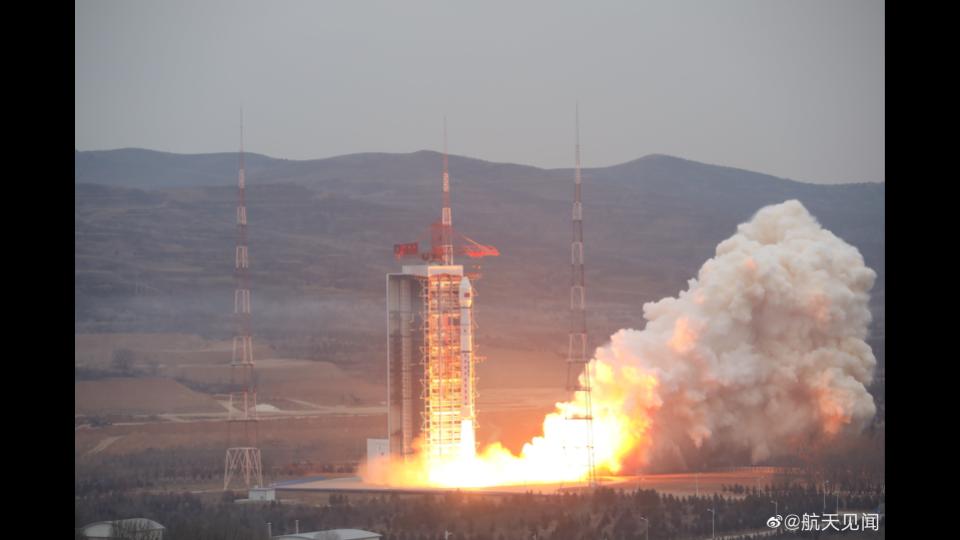
- Forums »International Space Flight (ESA, Russia, China and others) »Chinese Launchers »Gaofen 12 – CZ-4C – Taiyuan – November 27, 2019 (23:52 UTC)
According to official sources, the Gaofen 12 has a sub-meter resolution and will be used for monitoring land use and crop growth, urban planning, disaster prevention and mitigation (such as early warning systems), and modernization of national defense.
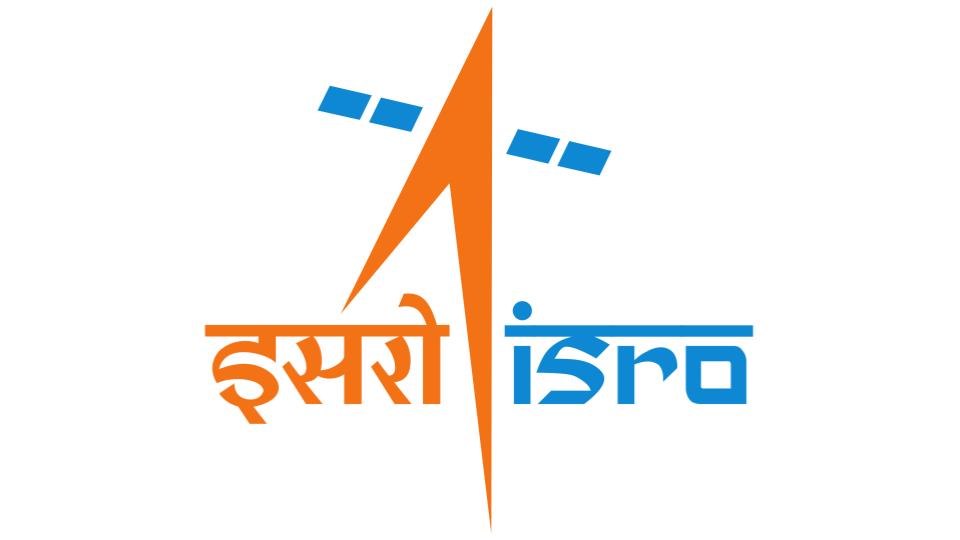
- Amateur sleuth helps locate crash site of India’s Vikram moon lander (Spaceflight.Now)
Finally, we end on a good note: The Vikram lander finally found — by a citizen scientist!

Indian engineer Shan Subramanian has been credited by NASA with finding the Vikram lander. Back in October, he began posting side-by-side images to compare the lunar landscape before and after Vikram’s landing attempt. He found these images by going through publicly available NASA data and analyzing them in his free time. It took him about four or five days to manually compare images before he found something that didn’t line up quite right.
You might be wondering why it took so long for this news to be released. Quite simply: the additional time was used to gather more data, verify Shan’s findings, and allow stakeholders to comment before everything went public. The scientists and engineers at NASA wanted to be one thousand percent sure that Shan had, indeed, found Vikram.
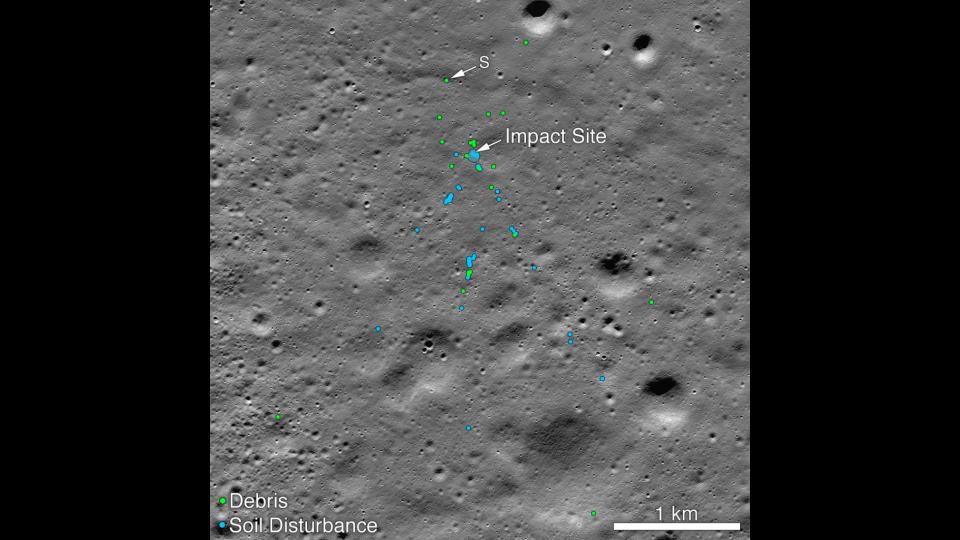
This is a mosaic of the impact site created by the Lunar Reconnaissance Orbiter team. The blue spots are areas of soil disturbance and the green spots are marking the location of debris.

- Live coverage: SpaceX scrubs Falcon 9 launch attempt, will try again Thursday (Spaceflight.Now)
- Long-duration coast experiment on tap after Falcon 9 launch Thursday (Spaceflight.Now)
- SpaceX cargo mission combines mighty mice, fires and beer research (Spaceflight.Now)
Today’s Falcon 9 will launch three days earlier than I selfishly wanted. Pro tip: do not schedule rocket launch related travel months in advance.
The instantaneous launch window opened at 17:51:58 UTC / 12:51:58 EST today, 04 Dec. In the event that upper level winds postponed today’s launch, a still-too-early-for-me window is available tomorrow at 17:29 UTC / 12:29 EST.
The Rocket
Today’s launch will use a brand new Block V Falcon 9 core booster and will attempt to land on the drone ship OCISLY. Normally for launches like this to the ISS the energy needed is low enough that there’s enough fuel left for the first stage can go back to the landing zones in Florida. However, AFTER Dragon is released on its way to the ISS, the upper stage will be performing an additional series of maneuvers, including a long coast phase and a deorbit burn. The first stage will have to burn some 13 seconds longer to put the upper stage in place to perform these maneuvers. Burning the engines for ANY amount of time uses up fuel, making a landing back at the Cape literally impossible.
For those of you wondering why SpaceX is doing these extra, seemingly unnecessary maneuvers: it’s for SCIENCE — and testing purposes. SpaceX thinks it is possible for a Falcon 9 upper stage can operate at long periods of time at coast, successfully perform various high energy maneuvers, then finally deorbit. But, like many things in rocket science (and science in general), theories need to be proven.

The Experiments
Today’s launch is in support of the CRS-19 mission, using the Dragon capsule to send about 2,600 kg / 5,800 lb (1300 2L soda bottles) of cargo and experiments to the ISS.
Among the experiments are a nest of 40 mice that have been genetically engineered to lack myostatin, a muscle growth inhibitor. If you don’t have myostatin, you don’t have anything to keep muscle growth in check. So yes, these are mice with a lot of muscle. All 40 of the so-called “mighty mice” will return to Earth ALIVE aboard the capsule in January for further study on the ground. The goal is to see whether disabling these same sorts of inhibitors in humans can have a beneficial effect to combat the loss of muscle and bone mass in astronauts.
Also aboard are two new iterations of ongoing experiments involving the study of fire and how it propagates in space, as well as the third iteration of tests sponsored by Anheuser-Busch involving research into the malting process of barley.
Malting involves the germination of a raw grain like barley, sorghum, wheat or rye in a controlled environment. The grain is forced to sprout by soaking it in water and then forced to stop germinating by drying it with hot air. This is done to release enzymes that break down sugars and proteins in the grain to make fermentation easier. Once this process is complete, the grain is now referred to as malt and is used for a variety of things including making malt vinegar, malted milk, beer, and whisky.
No word on when or if the space-malted barley will be used in brewing or if it will be available to the public. Barley previously went to space for an experiment on the CRS-13 mission.
—————-
And that rounds out our show for today.
Thank you all for listening. The Daily Space is produced by Susie Murph, and is a product of the Planetary Science Institute, a 501(c)3 non profit dedicated to exploring our Solar System and beyond. We are here thanks to the generous contributions of people like you. Want to become a supporter of the show? Check us out at Patreon.com/cosmoquestx
Each live episode of the Daily Space is archived on YouTube. If you miss an episode on Twitch.tv, you can find it later on youtube.com/c/cosmoquest. These episodes are edited and produced by Susie Murph.
We are here thanks to the generous contributions of people like you who allow us to pay our staff a living wage. Every bit, every sub, and every dollar committed on Patreon.com/cosmoquestx really helps. If you can’t give financially, we really do understand, and there are other ways you can help our programs. Right now, the best way you can help is to get the word out. Let you friends know, share our channel to your social media, or leave a recommendation. You never know what doors you are opening.
We really wouldn’t be here without you – thank you for all that you do.


 We record most shows live, on Twitch. Follow us today to get alerts when we go live.
We record most shows live, on Twitch. Follow us today to get alerts when we go live.